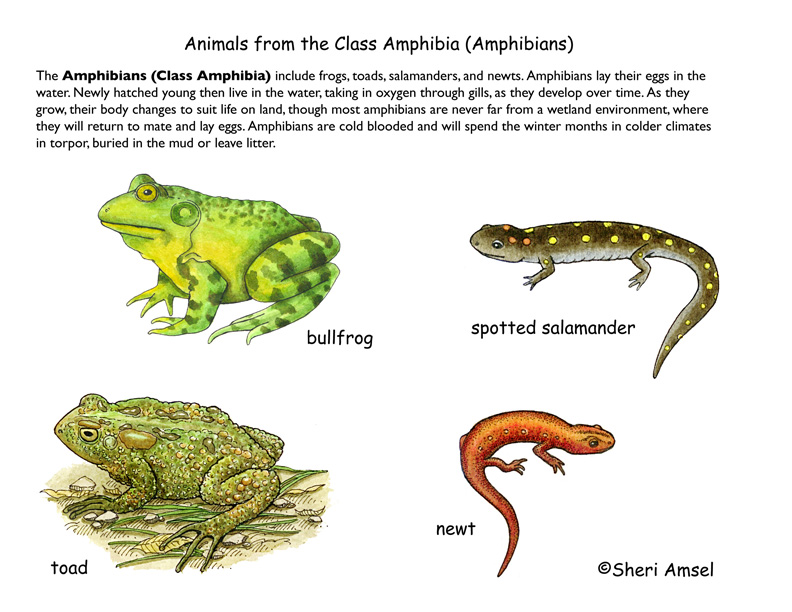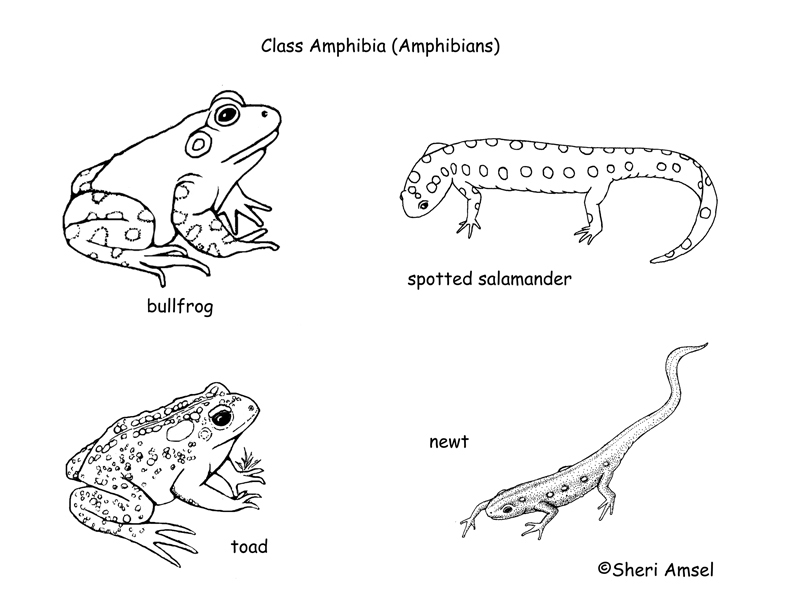

The Amphibians (Class Amphibia) include frogs, toads, salamanders, and newts. Amphibians lay their eggs in the water. Newly hatched young then live in the water, taking in oxygen through gills, as they develop over time. As they grow, their body changes to suit life on land, though most amphibians are never far from a wetland environment, where they will return to mate and lay eggs. Amphibians are cold blooded and will spend the winter months in colder climates in torpor, buried in the mud or leaf litter.
Amphibian Classification:
Orders of the Class AMPHIBIA
The class of amphibia is broken down into 3 ORDERS:
1) Caudata (Urodela) Salamanders
2) Anura (Salientia) Frogs and Toads
3) Gymnophiona wormlike amphibian
To make black and white copies for your whole class, see the copy-friendly version below.
When you research information you must cite the reference. Citing for websites is different from citing from books, magazines and periodicals. The style of citing shown here is from the MLA Style Citations (Modern Language Association).
When citing a WEBSITE the general format is as follows.
Author Last Name, First Name(s). "Title: Subtitle of Part of Web Page, if appropriate." Title: Subtitle: Section of Page if appropriate. Sponsoring/Publishing Agency, If Given. Additional significant descriptive information. Date of Electronic Publication or other Date, such as Last Updated. Day Month Year of access < URL >.
Amsel, Sheri. "Class - Amphibians (4th Grade and up)" Exploring Nature Educational Resource ©2005-2024. December 14, 2024
< http://www.exploringnature.org/db/view/Class-Amphibians-4th-Grade-and-up >

